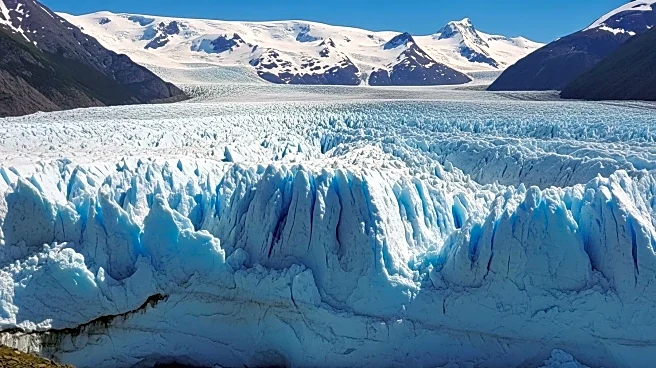What's Happening?
A new study led by the Pellicciotti group at the Institute of Science and Technology Austria (ISTA) reveals that Central Asia's last stable glaciers, located in the Pamir Mountains of Tajikistan, have started to collapse. The research, published in Communications Earth & Environment, shows that these glaciers, once considered resilient, have reached a tipping point due to insufficient snowfall. The study utilized a monitoring network established on a benchmark glacier in Tajikistan, modeling the catchment's behavior from 1999 to 2023. The findings indicate that the glacier likely reached its tipping point in 2018, marking the end of its anomalous stability.
Why It's Important?
The collapse of these glaciers is significant as they are crucial 'water towers' for Central Asia, providing meltwater reserves second only to the polar caps. The glaciers' decline threatens water supply for downstream regions, impacting agriculture and ecosystems dependent on snow and ice melt. The study highlights the urgent need for comprehensive data and robust future projections to understand and mitigate the effects of climate change on these vital water sources. The findings underscore the broader implications of climate change on global water resources and the necessity for international collaboration in environmental monitoring.
What's Next?
The study calls for expanded research efforts to address the lack of data and improve future projections for the region. Researchers aim to establish more monitoring sites to better understand the glaciers' behavior and the impact of climate change. The collaboration between international scientists and local researchers in Tajikistan will continue, focusing on sustainable monitoring practices and community engagement. The findings may prompt policy discussions on water resource management and climate adaptation strategies in Central Asia.












